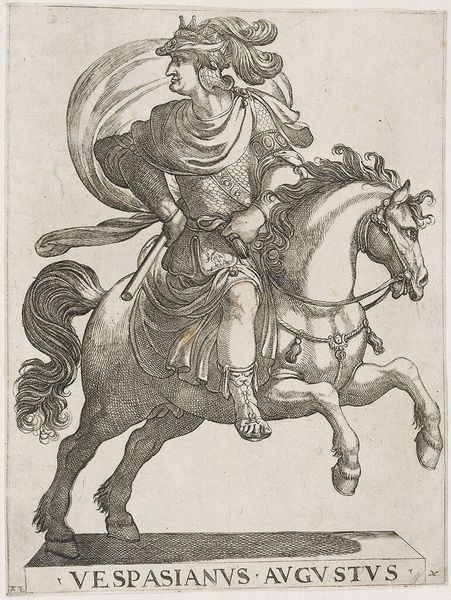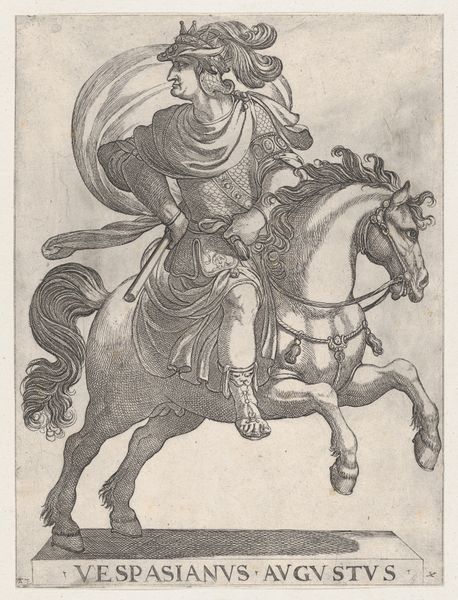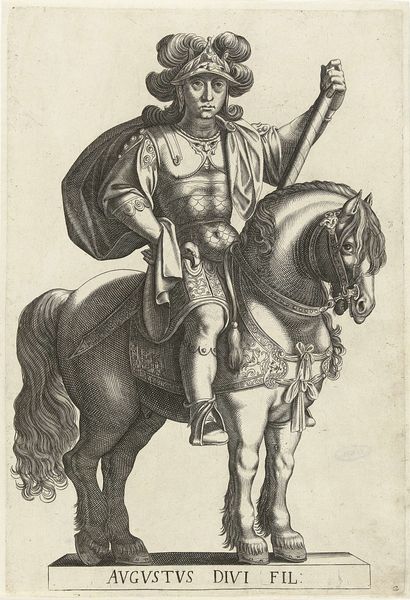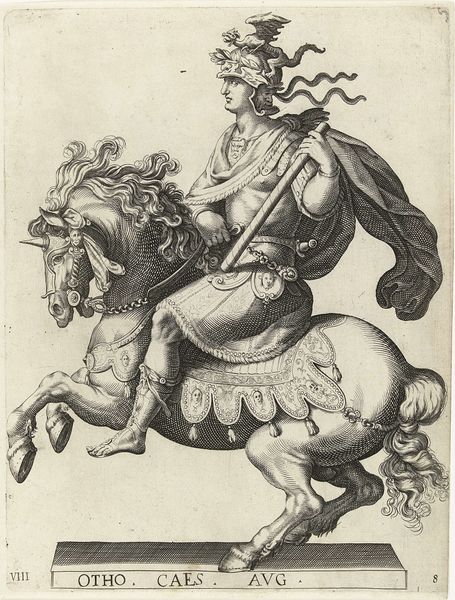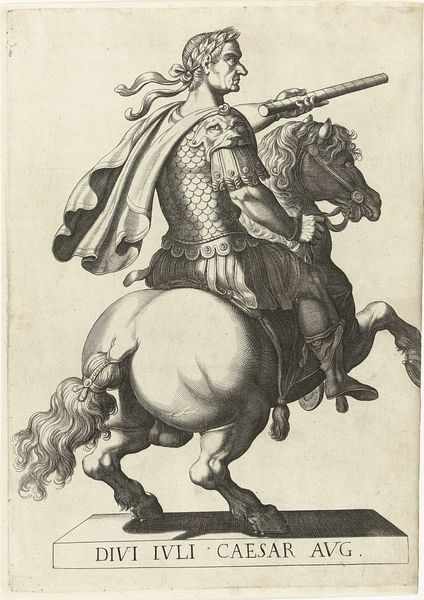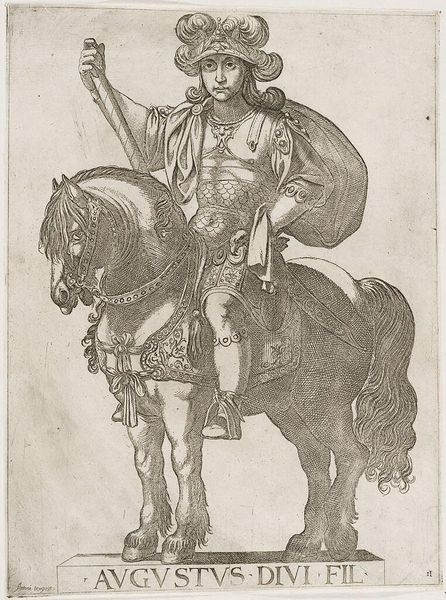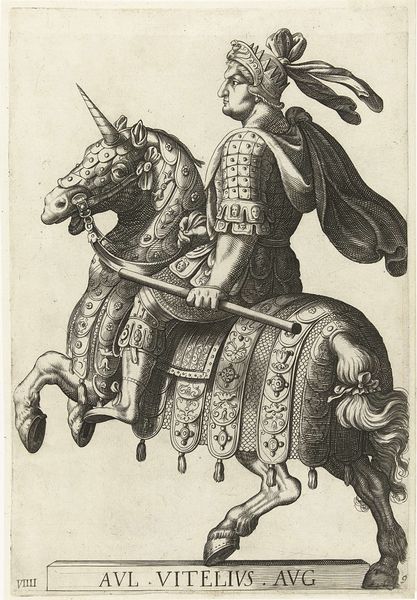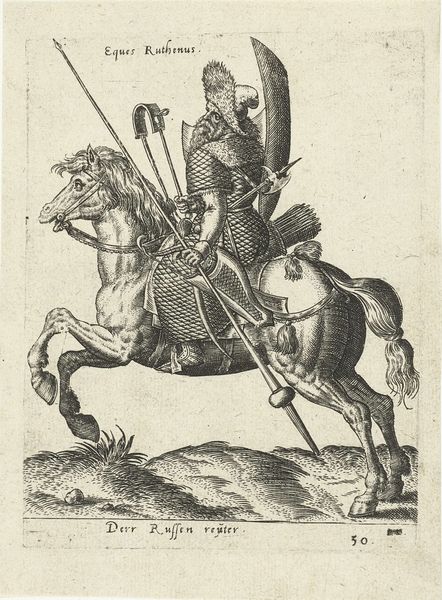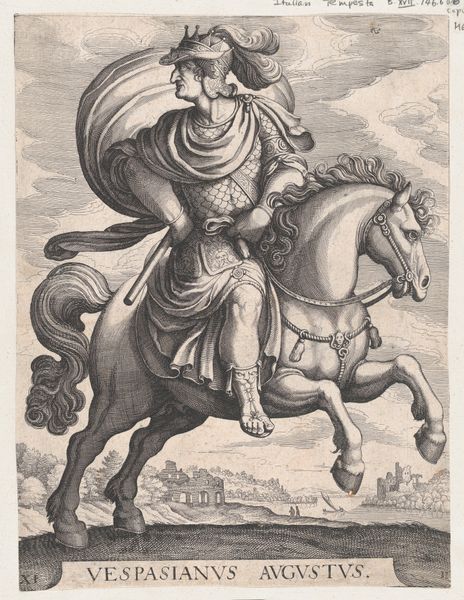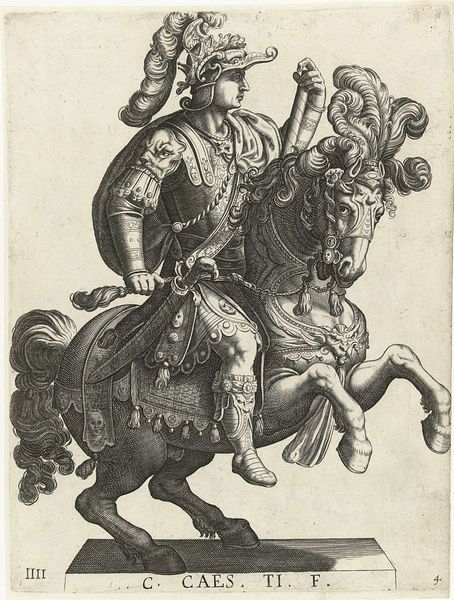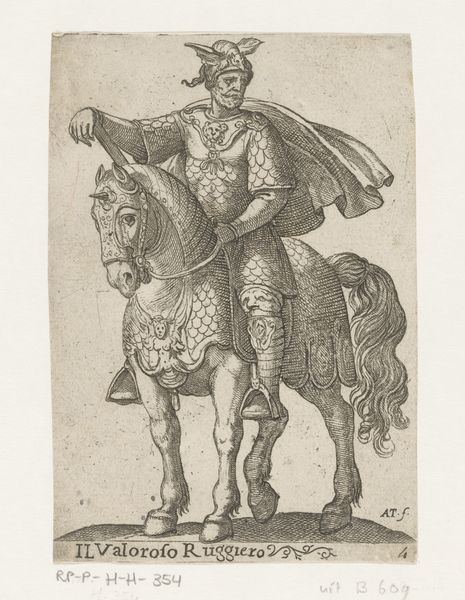
print, engraving
#
portrait
# print
#
caricature
#
classical-realism
#
portrait drawing
#
genre-painting
#
history-painting
#
engraving
Dimensions: height 301 mm, width 225 mm
Copyright: Rijks Museum: Open Domain
Editor: This is a rather dashing engraving, "Ruiterportret van keizer Vespasianus," made between 1616 and 1620 by Laurens Eillarts. The textures feel incredibly detailed. What symbols or impressions do you find particularly interesting in this image? Curator: Well, consider how the horse serves as a potent symbol of power, virility, and nobility across cultures. Vespasian, astride it, isn't just any rider; he's embodying an archetype of leadership that reaches back to antiquity. Do you notice the direction the horse faces? Editor: It’s facing right, away from us in a way. Does that signify something? Curator: Potentially. The directionality in equestrian portraits often indicated forward progress or perhaps, symbolically, moving towards the future or the viewer’s own time. But notice too the armor. The visual weight it adds and how it both protects and imprisons, signifying not only military prowess but the burdens of rule. What kind of cultural echoes might a Renaissance audience have picked up from this kind of image? Editor: So, while on one level it shows a Roman Emperor, the artist also speaks to contemporary ideas about leadership? Curator: Precisely! They saw Vespasian through the lens of their own political and social concerns, investing his image with symbolic weight relevant to their time. Consider this a form of visual memory, a dialogue across centuries, always coloured by the present. Editor: That's fascinating, the image works like a bridge between different eras and ideals of leadership. I will remember that!
Comments
No comments
Be the first to comment and join the conversation on the ultimate creative platform.
